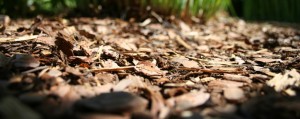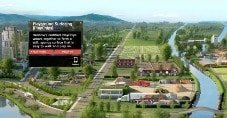Landscape Design: A Beautiful Wall
/0 Comments/in Construction Landscape Journal, Landscape, Municipal and Infrastructure Journal, Slope Stabilization, Sustainable Development /by Tanya RichardsGrand Opening: Hazelgrove Park in Surrey
/0 Comments/in Municipal and Infrastructure Journal, Parks, Playgrounds /by Tanya RichardsTBT: Terra Nova Park
/0 Comments/in Landscape Journal, Municipal and Infrastructure Journal, Parks, Playgrounds /by Tanya RichardsMandated Green Roofs in Toronto. Is Vancouver Next?
/0 Comments/in Environment, Green Infrastructure, Sustainable Development /by Tanya RichardsGreen roofs have many benefits. They not only insulate the buildings they shelter but also improve air quality and reduce runoff, easing sewer system loads and preventing associated overflow. They cool in summer, reduce heat loss in winter, and can support birds and other wildlife. Where green roofs top public buildings, they create public green space and parkland. Living roofs can even help cool an entire city in the summer by reducing what’s known as the “urban heat island effect,” where traditional roofing and paving materials increase the overall temperature of the air.
With Toronto’s new Green Roof Mandate, it is well on its way to becoming Canada’s Emerald City. Thanks to a City of Toronto bylaw that requires green roofs on new construction, green roofs will see a dramatic rise in Toronto’s skyline. Residences, commercial and institutional buildings over 2,000 square meters must have a roof that’s 20-60 percent “living.” Green/living roofs are partly or completely covered by vegetation, planted into a growing medium and sitting over a waterproof membrane. They often include structural support, irrigation and drainage systems, and can even incorporate greywater treatment ponds.
With the living roofs, much of the rain fall will now be “absorbed” into the plants and lessen the burden on waste water treatment and storm water volumes. For the city of Toronto, this means that there will be four to five more beach days. That’s good news for everyone. The question for us in City of Vancouver BC is, are we next?
Read the article here.
Victoria PlayChip Installation
/0 Comments/in Municipal and Infrastructure Journal, Parks, Playgrounds /by Tanya RichardsWhy Erosion Control Matters
/0 Comments/in Environment, Erosion Control, Municipal and Infrastructure Journal, Sustainable Development /by Tanya RichardsWhy Sustainable Development Goals Matter
/0 Comments/in Environment, Green Infrastructure, Municipal and Infrastructure Journal, Sustainable Development /by Tanya RichardsWhy Sustainable Development Goals Matter
As our neighbourhoods grow, and our needs as communities increase, development and ingenuity bring solutions to people today. The key to ensuring our solutions are long-term is found in the way we do development.
Why sustainable goals matter is simply, Sustainable Development involves a relationship between nature and humans that demonstrates respect for both. Though we may not always notice it, the natural environment provides a great deal for us, and at times needs some corrective procedures to continue providing for us in the future.
We can see how our relationship to nature is give and take. The Eco-System naturally produces rainfall, provides crops to farm, and protects humans from the elements. At times, for a variety of reasons, this system breaks down and human intervention is needed. Sustainable Development is a balancing act where both parties work together for one common goal, and without it, things begin to fall apart.
Denbow seeks to use innovation to work within this balancing act. Our team specializes in construction, agriculture, landscaping, and municipal/infrastructure, all of which use sustainable development techniques. An example of this is found in Denbow’s newer work in the areas of erosion and sediment control, using forest residuals.
One of the many products Denbow offers is manufactured soil. A mixture of minerals, liquids, organic matter and countless organisms, without healthy soil, the elements would be stripped and the land eventually destroyed. Soil holds everything together, and the right soil for the right project makes all the difference.
At Denbow, we use high quality blended soils that are produced with stringent guidelines for different kinds of use. This mixture of engineered soils can be used for a few specific purposes:
- Vegetable Garden Soil is rich in organic matter. Using this soil in your garden will help you grow the best, healthiest vegetables each season. Growing your own vegetables can give your family the vitamins and minerals our bodies need.
- Specialty Soils are proprietary blended. These are used for such projects as green roofing, structural soil for street tree growth and stormwater management. The structure of these soils are custom made and vigorously tested. Sustainable development projects often require creative measures, and specialty soils provide the perfect opportunity to meet the needs of the specific projects.
- Manufactured Soils are premium blends that contain various levels of compost and sand, designed to benefit trees and shrubs, turf health, and to rejuvenate depleted existing soil. Using these soils can restore existing greenery, or provide an important start for new growth.
Within the variety of soil produced by Denbow, we see how sustainable development starts in our own backyard. Using naturally produced materials, we can benefit from their use as we return them to the earth in our different projects, neither harming human nor the environment.
Denbow Innovations are full of products and services for sustained developments located in the Lower Mainland of British Columbia.
Phone for more information (888) 933.6269
” Delivering Satisfaction for Industrial, Government, Commercial and Residential Use”
Playground Wood Chips a Better Alternative to Pea Gravel
/5 Comments/in Municipal and Infrastructure Journal, Playgrounds /by Tanya RichardsPlayground Wood Chips a Better Alternative to Pea Gravel
Are playground wood chips a better alternative to pea gravel? We think so.
Playground wood chips, as the name implies are raw wood materials that are specially designed, engineered and installed for use in playgrounds. The difference between playground wood chips and wood chips used for mulch in gardens is that playground wood chips are “engineered wood fiber” (EMF) with greater shock absorbency. This is key to provide the maximum safety for children at play within the parks.
Playground wood chips are more fibrous than garden wood chips used for mulching. The size of playground wood chips varies but to maintain compliance with the Canadian Consumer Product Safety Act (CCPSA), are less than a few inches long.
So why are playground wood chips better than pea gravel?
First, it is less of a choking hazard. Pea gravel can be an incredible choking hazard for small children under the age of three. This compared to the larger wood fibre that is more difficult to have a child actually swallow.
Second, pea gravel allows things to be easily embedded under the surface. Since pea gravel is made up of a bunch of small rocks it does not clump or pad down like wood chips. Wood chips are actual chips of wood which allows them to lay down and interlock to create a more uniform surface while providing maximum cushion. The uniform top prevents things like needles and other sharp objects from falling below the surface and endangering the kids that are at play.

Third, pea gravel’s ability to cushion falls or kids’ feet when they jump is only in it’s displacement and depth of product. Once the pea gravel has been displaced or the depth of product is too low children could hit the underlying bedrock and get injured. What about wood chips? See our point above. Playground wood chips give the ability to create a uniform surface, interlocking to prevent large product displacement and providing maximum absorbency.
Finally, pea gravel are small rocks. If a child does become frustrated and decides to throw a handful of little rocks it does have the potential to hurt or worse, take out a child’s eye. Yes, the same can be said for wood chips but by nature wood chips are lighter and are less likely to reach a velocity that will hurt other children. A child could throw a wood chip but it is light and less likely to result in injury.
So what is the best installation practices for this “best playground cover”, how should it be installed?
Playground Wood Chips – Installation
To reduce injury, playground woods chips are installed in beds nine to twelve inches on level ground and must be replaced as weather and wear. It is important to consider the ratio of compaction due to weather and wear and add playground wood chips to maintain safety. These depth of playground wood chip beds allow for shock absorption from most falls from playground equipment from up to ten feet. As for most types of wood chips, playground wood chips should be raked frequently to avoid moisture buildup. In unsheltered and high use areas of playgrounds, it may be necessary to add playground wood chips. For example, areas beneath swings and slides are most likely to require additional playground wood chips. New layers of wood chips can be added atop the existing layers.
What is the best way to install woodchips?
Blow it in. With the techonology of blower trucks, you can now get your material delivered and installed all at one time. It is a huge time and personelle saver and the cost to do it is marginal compared to the labour and effort of using wheel barrows. Check out more about our blower trucks.
Advantages of Playground Wood Chips
In addition to safety and shock absorption features, installing playground wood chips offers other advantages. These include:
- Greater surface cohesiveness with maximum absorbency
- Leaves and other debris remain on the top layer
- Chemical free
- Insect resistant
Playground areas are used mostly by children under the watchful eyes of their parents or guardians. Playground wood chips are moisture resistant which also provides the added feature of mold and mildew resistance. Due to layering of the beds, leaves and other debris remain on the top layer of the bed and are quickly and easily removed. Since playground woods chips are created from natural wood fibres, they are also chemical free. This assures parents and children of playground materials are environmentally safe. Also, since playground wood chips are engineered wood fibres insects like mosquitos, ticks and flies are repelled by these materials.
Choose Your Playground Wood Chip Supplier Carefully
Choose the supplier of playground wood chips based on experience and business reputation. The best suppliers emphasize safety features and also proper application as well as having the right experience of manufacturing under the government standards.

